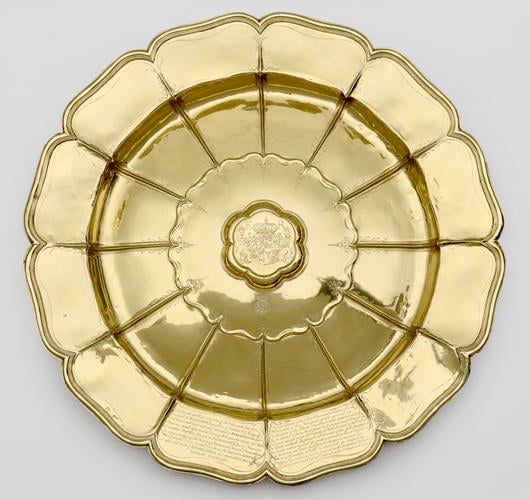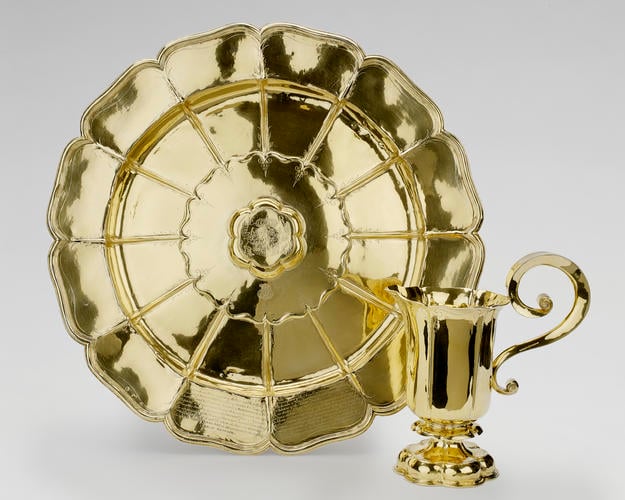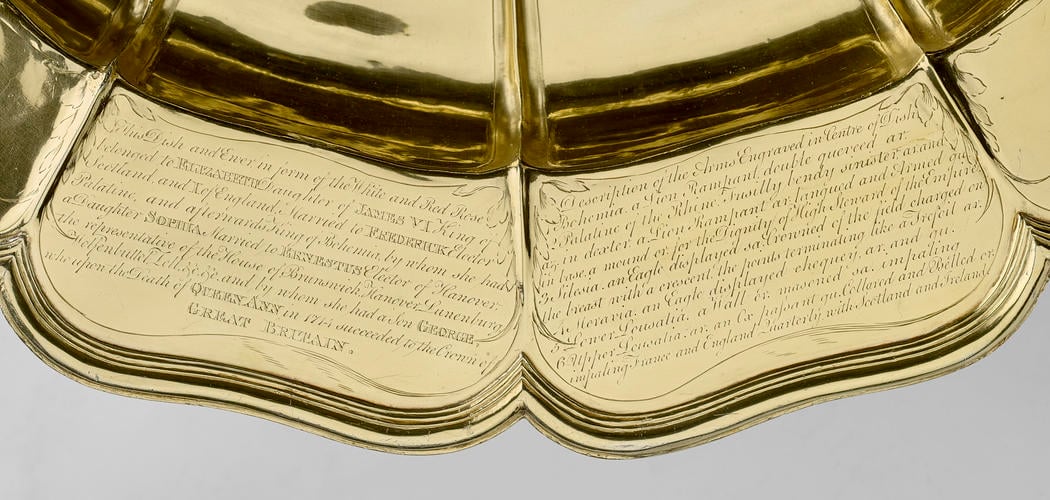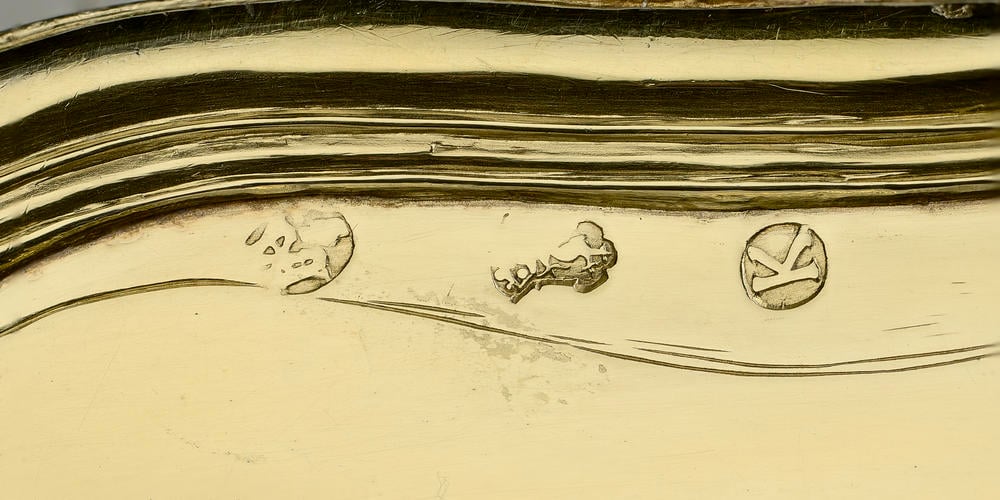-
1 of 253523 objects
Basin 1640
Silver gilt | 5.4 x 55.6 x 55.6 cm (whole object) | RCIN 51081

Attributed to Hans Jacobsz Wesson (active c. 1640)
51081.tif 1640

Attributed to Hans Jacobsz Wesson (active c. 1640)
51452+51081.tif 1640

Attributed to Hans Jacobsz Wesson (active c. 1640)
51081 coat of arms.tif 1640

Attributed to Hans Jacobsz Wesson (active c. 1640)
51081 inscription detail.tif 1640

Attributed to Hans Jacobsz Wesson (active c. 1640)
51081 marks.tif 1640





-
This basin, and its associated ewer, belonged to the 'Winter Queen', Elizabeth of Bohemia (1596-1662), whose arms are engraved in the centre of the basin. Elizabeth, daughter of James VI and I and grandmother of George I, linked the Stuart and Hanoverian dynasties and all British monarchs since George I are directly descended from her. George IV's fascination with the Stuarts probably led him to acquire this ewer and basin in 1816. He had the basin engraved with inscriptions explaining the genealogical importance of Elizabeth in the Hanoverian succession to the British throne. The romantic tragedy of the Winter Queen's life may also have appealed to George IV.
This ewer and basin are the only known surviving items of plate attributed to Hans Jacobsz. Wesson, a goldsmith in The Hague, where the exiled Bohemian court found refuge after 1620 and lived for many years in impoverished grandeur. The pieces are early examples of the emphasis on form rather than decoration, characteristic of Dutch silver of the 1640s. George IV erroneously believed that the basin was in the form of the Tudor Rose; the continuous inventory of plate at Carlton House recorded its arrival as 'a large and curious gilt Salver of White and Red Rose & a Ewer' on 2 January 1817.
They are unlikely to have stayed in the exiled Queen's possession for any considerable time. Until 1642 the Queen received a regular if somewhat meagre pension from her brother, Charles I. Following the outbreak of the English Civil War this ceased and she was forced to pawn much of her property. She also handed over many of her finest remaining possessions to her son Charles Louis (1617-80) in return for money, food and fuel.
Hallmarks for The Hague, 1640, and maker's mark attributed to Hans Jacobsz. Wesson. Central boss on basin engraved with ER monogram and impaled coats of arms of Frederick V and Elizabeth of Bohemia; basin engraved on rim: This Dish and ewer in form of the White and Red Rose / belonged to ELIZABETH, Daughter of JAMES VI King of / Scotland and I of England. Married to Frederick Elector / Palatine, and afterwards King of Bohemia, by whom she had / a daughter SOPHIA. Married to ERNESTUS Elector of Hanover / the representative of the House of Brunswick, Hanover, Luneburg / Wolfenbuttel, Zell &c &c and by whom she had a Son George / who upon the Death of Queen Ann in 1714, succeeded to the Crown of Great Britain. Description of the arms Arms Engraved in Centre of Dish / 1. Bohemia, a Lion Rampant, double queued ar. / 2. Palatine the Rhine, Fusilly bendy sinister ar. and / az., in dexter a Lion Rampant ar. Langued and Armed gu / in base a mound or for the Dignity of High Steward of the Empire / 3. Silesia, an Eagle Displayed sa. of the field charged on / the breast with a crescent the points terminating like a Trefoil ar. / 4. Moravia and Eagle displayed chequey ar. and gu. / 5. Lower Leusatia Wall or. masoned sa. impaling / 6. Upper Leusatia ar. an Ox passant gu. Collared and Belled or. / imapling France and England quarterly with Scotland and England.
Catalogue entry from Royal Treasures, A Golden Jubilee Celebration, London 2002Provenance
Elizabeth, Queen of Bohemia, c.1640; Rundell, Bridge & Rundell; from whom purchased by George IV, when Prince Regent 1817 (£65 3s. 10d., with repairs, gilding and engraving at a further cost of £44 16s.; bill untraced)
-
Creator(s)
(retailer)Acquirer(s)
-
Medium and techniques
Silver gilt
Measurements
5.4 x 55.6 x 55.6 cm (whole object)
3000.0 g (Weight) (whole object)
Category
Place of Production
The Hague [Netherlands]